Related Blogs
Table of Content
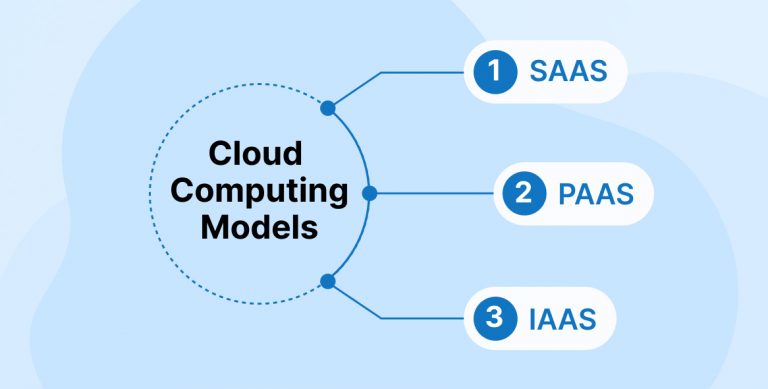
The age of cloud computing and the Internet of things has already begun! More and more tech-driven companies are found evangelizing for the concept and tooting their horns across the globe. So basically if you think that cloud computing is just a small phase or a set-and-forget venture then you are totally mistaken. Let’s see how!
1. What is Cloud Computing?
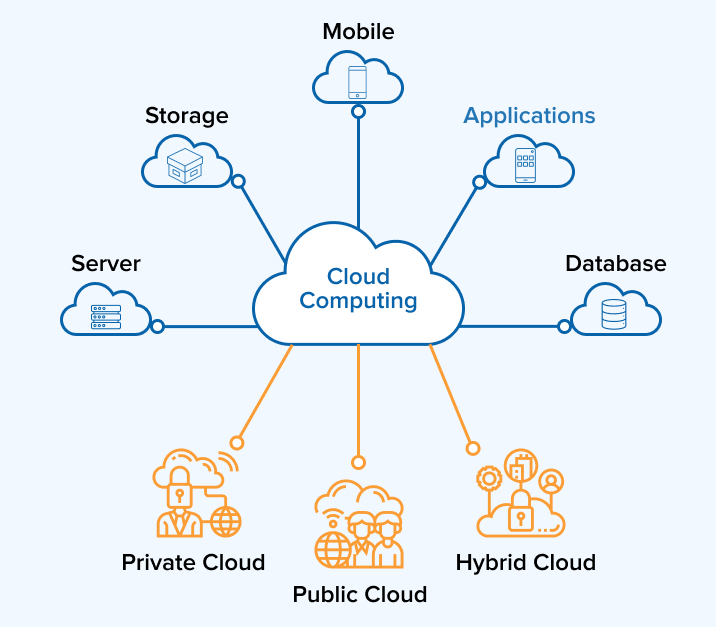
Cloud Computing is the name to reckon with a wide range of benefits in regards to business agility, versatility and cost-effectiveness. Gone are the days when businesses were compelled to store or access programs, and apps directly on their hard drive. Today we have cloud technology.
The technology enables its users to work remotely using the internet from a network cloud. Of course, these provider’s data centers are commercially placed, often termed as public cloud. You must be acquainted with Amazon web services, Salesforce CRM, and Microsoft Azure, this is what a public cloud is all about.
By now you must have figured out that the cloud universe is further bifurcated into two segments 1) public cloud and 2) private cloud.
Now imagine you are running a small business and aim to meet regulatory business requirements. During such cases, It is more advisable to seek the private cloud than the public one. Everything right from confidential documents, intellectual property, medical records, financial data, is well-taken care of.
In a nutshell, a public cloud is said when the services are delivered across the organization using a third-party service provider whereas a private cloud is a dedicated and secured service exclusively to, and accessible only by, a single customer on consumer demand.
Now let us recall those earlier days when the term was coined. What was the scenario back then in early 2000s? Most of the small and mid-sized companies had the issue of buying new computing devices. As a result, computer bureaus started offering rent time on a mainframe, which in return became a great success.
Slowly and steadily corporate data centers were established where businesses irrespective of their size could store their confidential data. Cloud computing today as a whole underpins an array of services such as Gmail, backing up your media data on the cloud, and so forth. With the rise of tech, it seems that the fundamentals of storing, networking and processing has changed to a great extent.
Further, Let’s discuss some of the most common yet crucial types of cloud computing services available around.
- Software as a Service (SaaS)
- Platform as a Service (PaaS)
- Infrastructure as a Service (IaaS)
Cloud computing models can be mapped with layers of business value pyramid as shown below diagram.
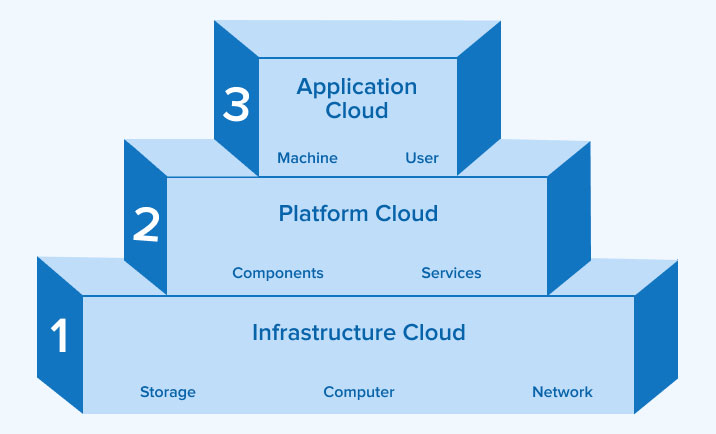
2. What are Cloud Service Models?
Cloud computing must be a crucial aspect of your business growth strategy. Here’s how you can make the most of it and satisfy a unique set of your business requirements.
With the time passing by, meeting customers expectations such as offering fast, secured and reliable services have become pretty much daunting. There is an unprecedented burden on organizations to enhance their IT infrastructure which nobody talks about these days.
Fortunately, acquiring extra hardware is not the only option left. We have plenty of cloud-based service providers offering three unique service models.
IaaS (Infrastructure as a Service), PaaS (Platform as a Service), and SaaS (Software as a Service) are the three service models that come under cloud computing services. They are also referred to as cloud computing service models or cloud service models.
The three types of cloud models and their characteristics are briefly described below so that it can make your decision for choosing the right cloud service model according to your business requirements a bit easy task.
2.1 Infrastructure as a Service (IaaS)
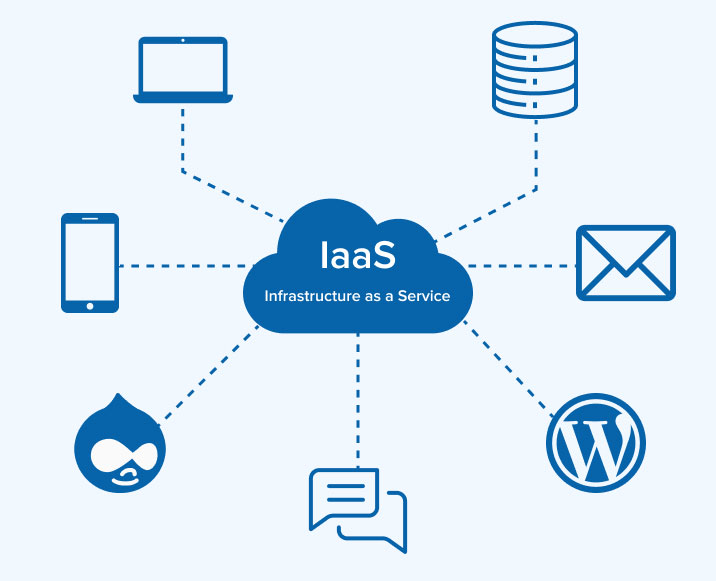
The infrastructure cloud provides cloud storage and computing resources as a service that enables developers and IT organizations to deliver business solutions. IaaS has evolved from the virtual private server (VPS) concept. An IaaS cloud provider gives complete flexibility to consumers in choosing desktops, servers or on-demand network access.
Consumers can customize the entire infrastructure package by selecting CPU hours, data storage space, bandwidth etc. Rather than buying expensive servers and taking the headache of setting up the physical data centers and underlying infrastructure, IaaS cloud as the most flexible cloud computing model helps businesses in reducing IT CAPEX and OPEX by a big proportion.
In simple words, IaaS allows remote management of data center infrastructures. IaaS contains sub-categories: Public, Private and Combination. The Public cloud consists of shared computing resources and networking resources, managed by a cloud service provider. By contrast, the private cloud provides secure user access to your cloud resources and is managed by the organization it serves. The hybrid cloud is maintained by both internal and external cloud providers.
IaaS adds value to businesses through Business agility; Cost reduction; Reliability, Scalability; Privacy & governance; and single integrated user experience. Some of the most popular IaaS cloud service providers include Amazon Web Services, Microsoft Azure, and Google Compute Engine.
Benefits of Choosing Infrastructure as a Service
- Enhanced performance and save upfront cost.
- It comprises intensive information security measures like end-to-end encryption.
- Provides scalability and flexibility like none other cloud services.
- Keeps your data restored and up-to-date.
Disadvantages of IaaS
Discussing the advantages is not enough, to understand a model completely, we must also look at its disadvantages.
- Limited control: When you subscribe to IaaS, your service provider manages everything from upkeep and upgrades to infrastructure maintenance. Every time you need to make a necessary adjustment, no matter how small it is, you have to ask your service provider for it.
- Security issues: In an IaaS computing model, the responsibility of protecting the data and applications lies with users. Maintaining that responsibility grows difficult with each passing day as new threats arise continuously.
- Legacy systems: No matter how much you want to make a transition from on-premise to cloud infrastructure, some legacy systems aren’t compatible with it. To make a shift , you either need significant updates or complete replacements to function in a cloud environment.
Basic Characteristics of IaaS
- Computing resources distributed as a service.
- Dynamic, on-demand scaling of computing resources.
- Utility-based pricing model.
- Concurrent users on a single piece of computing hardware.
Common Use Cases of IaaS
Implementing an Infrastructure as a Service (IaaS) model is most effective when you understand its common use cases.
- Software development: IaaS is very quick at setting up development and testing environments compared to on-premises. The rates are cheaper as well.
- Startups: Not every startup is financially capable of investing in extensive IT infrastructure. They have to opt for IaaS if they require enterprise-class data center capabilities but can’t invest in hardware and infrastructure management.
- Ecommerce: Implementing IaaS can really help out online retailers. eCommerce sites often witness sudden traffic spikes. So, they need IaaS’s ability to scale on demand during such periods.
- IoT, AI and event handling: IaaS is an ideal option for applications dealing with large datasets. Empowered by IaaS, they can easily set up or scale up their computing resources and data storage.
- Disaster recovery: Disaster recovery becomes easy with the implementation of IaaS computing model. You no longer need to set up redundant servers at multiple locations. IaaS allows the direct deployment of a disaster recovery solution to the cloud provider’s existing geographically dispersed infrastructure.
2.2 Platform as a Service (PaaS)
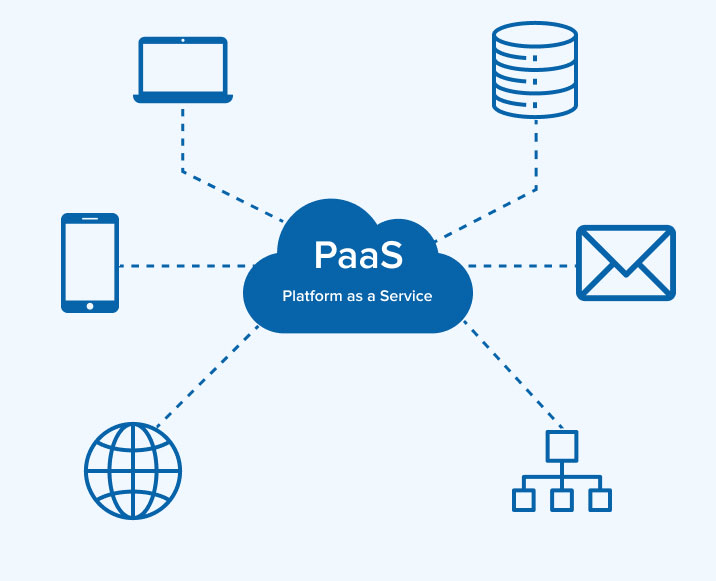
The next level up in the cloud services pyramid is the Platform cloud. PaaS(Platform as a Service) delivers development/operating systems environments as a service and provides flexible pricing options depending on various business requirements. It includes a set of development tools and cloud services designed to make coding, deploying, and testing of the applications and the operating system quickly as well as efficiently.
PaaS is similar to SaaS services except that, rather than being software delivered over the web, it is a cloud platform allowing computing power required for the development/deployment of that software, delivered over the web. Prime examples include Salesforce’s Force.com, Azure from Microsoft and Google App Engine.
Benefits of Paas
- Setting up and getting started becomes easy.
- Sharing resources across multiple development teams becomes way easier.
- Security and data protection.
- In the end, you are bound to receive fruitful and efficient services.
- A significant amount of cost is reduced.
Disadvantages of PaaS
With good news, comes the bad news. Similarly, using PaaS will surely give you some advantages. But as an added bonus, you will get the following disadvantages as well.
- Dependency: Users are completely dependent on the PaaS providers for platform availability, its maintenance, and upgrades. If the provider faces any problem then it would spell trouble for users as well. Even a small disruption on the provider’s part can result in huge loss for the users.
- Integrations: You may encounter difficulties in integrating your PaaS solution with other apps, whether it be an old or a new one. An integration is only possible if your provider or any third party offers suitable plugins or APIs.
- Limited capabilities: It is not necessary that your PaaS solution would support every app and workload out there. It doesn’t even support customized cloud operations and automated workflows. In short, PaaS inhibits both flexibility and operational capabilities of your business.
- Runtime: Every business uses a different set of programming languages and development frameworks for their project. It’s impossible to optimize a PaaS solution for all use cases. On the other hand, finding a custom solution is a really difficult job.
- Data security: Utilization of third-party servers makes your data vulnerable. Moreover, only a limited number of security solutions can be integrated with third-party systems. So, the option of strengthening data security is out of the window unless the third party takes any measures.
Basic Characteristics of PaaS
- Single environment to develop, test, deploy, host and maintain applications and IT infrastructure management.
- Web-based UI designing tools to create, modify, test, and deploy different UI scenarios.
- Multi-tenant architecture facilitating concurrent users.
- Load balancing, sensitive data security and failover capabilities for application to be deployed.
- OS and Cloud programming APIs to create new apps for the cloud or to cloudify the current apps.
- Tools to handle billing and subscription.
Common Use Cases of PaaS
Considering both benefits and limitations, we can say PaaS is useful in the following cases.
- Agile development and DevOps: PaaS covers everything you will ever need for agile development and DevOps. It supports CI/CD by offering built-in automation.
- Cloud solutions: Name any cloud native technology from microservices to serverless computing and you will find that PaaS already supports them all. Because of this, developers have to build their solutions just once. Then they can be deployed and managed in any environment including public, private, on-premise and hybrid environments.
- API development and management: Developing, running and managing different APIs is easy with PaaS, thanks to its built-in frameworks. These APIs help securely share data and functionalities between apps.
- Internet of Things (IoT): Any programming language and framework you might need for IoT development and real-time data processing are supported in PaaS.
- Database management: PaaS allows you to set up and manage a database for your organization.
2.3 Software as a Service (SaaS)

The top most layer of the cloud services pyramid is a functional layer or SaaS layer. This type of cloud delivers a single application through the browser to multiple users using a multitenant architecture. With SaaS platforms, a provider sells an application to customers on a license basis, in a “pay-as-you-go” cloud model allowing users to save on physical hardware.
On the customer side, they do not have to do upfront investment in servers or software development; on the cloud provider side, with just one app to maintain, costs are low compared to conventional hosting. Salesforce (customer relationship management software), SRM, ERP as the most common examples of SaaS applications.
Benefits of Saas
- Easy to use.
- Test the software functionality in advance.
- The Pay-as-you-go model says it all, you have to pay only for what you are using.
- Save a significant amount of money, time and resources.
Disadvantages of SaaS
SaaS is a well-known and widely used cloud computing model. Therefore, it becomes extremely important for you to know its limitations as well.
- Limited customization: Although SaaS providers allow you to tweak the features and functionalities a little, it does not support advanced customization capabilities. As a result, the SaaS product fails to fulfill your unique project requirements.
- Data security: Because it is the job of SaaS providers to ensure data security, you have no choice but to trust them completely with it. Moreover, the servers in which your data is stored are located off-premise. So, you can’t enforce any additional security protocols as well.
- Lack of control: When using a SaaS solution, you don’t have any control over the performance and functionality of the software. You have to trust that the providers will maintain the availability and the performance of the software.
- Dependency on Internet connectivity: You will always need an internet connection to use SaaS solutions because they are cloud-based. It’s tricky for users who are working from remote areas or need an offline access to the software.
- Interoperability: You can’t integrate a SaaS solution with your existing app or service. Because SaaS solutions don’t support open integrations.
Characteristics of SaaS
- Centralized web-based access to company and commercial software.
- Entire business process shifting to the cloud, giving superior services to the client.
- No hassle of software upgrades and patches as they are managed by the cloud vendor.
- Application Programming Interfaces (APIs) allow integration with different applications.
Common Use Cases of SaaS
SaaS use cases vary widely from personal to enterprise requirements. Every cloud-hosted and ready-to-use software can be categorized as a SaaS solution.
Let’s discuss below some of the most popular use cases of SaaS.
- Remote Collaboration: Information sharing and team communication are no longer limited by geographical boundaries thanks to cloud-based SaaS tools like Slack, Zoom, and Zendesk.
- File Storage: You can now store, modify, access, and share files across devices with an internet connection using applications like Dropbox, promoting collaboration.
- CRM Solutions: Salesforce has revolutionized businesses interacting with customers by delivering personalized customer experiences increasing customer satisfaction.
- E-Commerce Platforms: SaaS-based e-commerce platforms like Shopify give a user-friendly interface to businesses to set up and manage their online stores and broaden their customer base.
- Graphic Design: Tools like Canva offer a drag-and-drop interface to create visually appealing posts, banners, marketing materials, etc., aligning with the business requirements and customer expectations.
3. After Understanding the Cloud Service Models – Time to Choose the Right Service Provider?

So before we proceed further, let us get the basics right! Adopting cloud services is said an ideal decision only when.
- You have launched new business models that might increase ROI.
- You want to achieve the best possible outcomes in the least possible time.
- Employee Remote working is the only option left.
- Wish to create a scalable infrastructure.
- Want to reduce IT costs.
- You are willing to get the competitive edge.
Now, it’s time to delve in further! As mentioned above, cloud computing providers mainly offer three different kinds of models – SaaS, PaaS, and IaaS. Making a choice about which cloud service model to opt for can be extremely hard to get through, especially for beginners, as each one is of a kind. Fret not, we can help you to get through without much hassle.
1. Are they well-versed with the current technologies?
Make sure to choose a cloud computing service provider who is well-versed in the current technical environment, workloads, and management preferences. Simultaneously, you must also think about the architecture, is it possible to incorporate the same in your existing workflow?
2. Data Security
Ask your cloud service provider to give you access to their data and system security. Any activity taking place is auditable. You must always prefer to check their internal security audit reports. By going through this evidence of remedial actions, you can easily predict their security management policies. Lastly, you must always check whether they are adhered to the standards like the ISO 27000 series or not.
3. Reliability and Performance
Measuring reliability or performance can be quite tricky. You can at least check the performance of the service provider for the past 6-12 months. Downtime is inevitable, but the key here is to check how your cloud computing service provider deals with it. Are the monitoring and reporting tools sufficient? Moreover, do they have the potential to be integrated into your existing management and reporting systems?
4. Cloud Shared Responsibility Model
The shared responsibility model defines cloud security, but it changes for IaaS, PaaS, and SaaS.
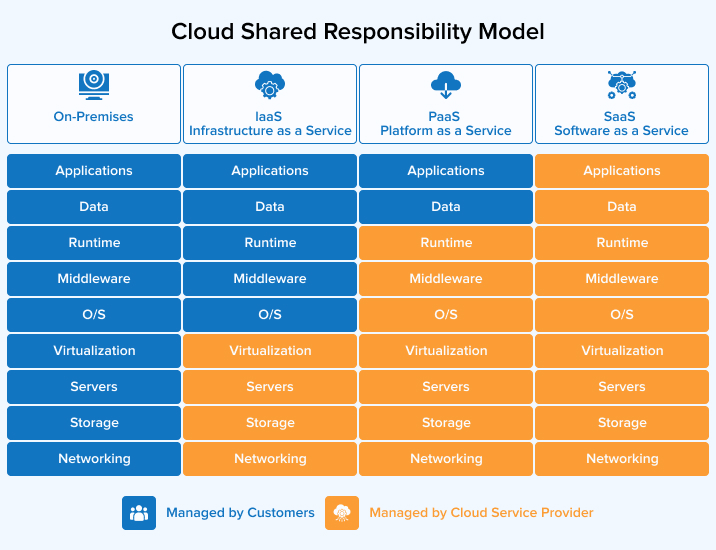
5. In a nutshell,
After the COVID-19 massive hit! The remote work culture has risen to a great extent. As a result, businesses are seeking streamlined collaboration and secured data storage facilities. With cloud computing services and cloud services models, they can work wonders and that too without any extra capital investment. In addition, make sure to choose the right cloud provider who knows which cloud service model fits you best.
FAQs
What is Cloud Computing Model?
A simple definition of a cloud computing model would be: a way to provide computing services over the internet. It offers immediate access to shared resources like storage, servers, software and networks on demand.
What are the Basic Cloud Models?
Software as a Service, Platform as a Service, and Infrastructure as a Service are the three basic cloud models that you must know.
How Cloud Computing Works?
Know that there are two parties in cloud computing; a service provider and clients. A service provider hosts data centers with computing powers and storage capacities. Whereas clients pay a service provider to use their resources over the internet.

Vishal Shah
Vishal Shah has an extensive understanding of multiple application development frameworks and holds an upper hand with newer trends in order to strive and thrive in the dynamic market. He has nurtured his managerial growth in both technical and business aspects and gives his expertise through his blog posts.
Subscribe to our Newsletter
Signup for our newsletter and join 2700+ global business executives and technology experts to receive handpicked industry insights and latest news
Build your Team
Want to Hire Skilled Developers?


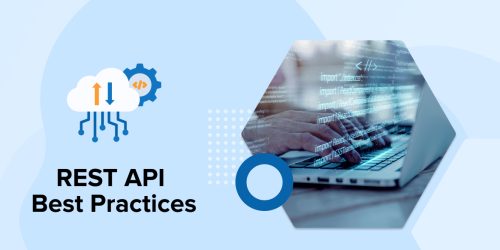


Comments
Leave a message...